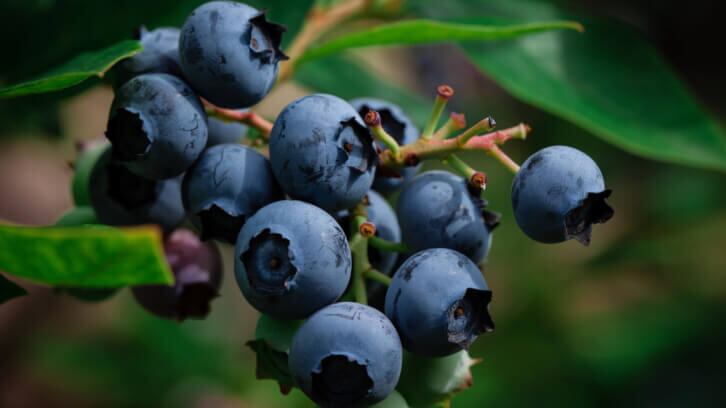“Our paper was most unique in that it showed the diversity at all the stages from the crop to the consumer,” Dr. Connie Weaver, lead author on the study and distinguished professor at San Diego State University, told NutraIngredients.
“We evaluated a whole germplasm of blueberry genotypes for their polyphenolic profiles and related this diversity to bioavailability and metabolism of the polyphenolic compounds. Further, we showed that dose of blueberry influences the host gut microbiome.”
Dr. Weaver’s team gathered experts in nutritional science, pediatrics, food science and technology, agronomy, and statistics from the University of Arkansas, Purdue University, Virginia Polytechnic Institute and State University, and North Carolina State.
Their collection of in vitro, preclinical, and clinical studies is part of a larger project to determine the optimal genotype and dose of blueberries to improve age-related bone loss in postmenopausal women.
Diversity in polyphenolic profiles and bioavailability
Research to date shows that bioactive phytochemicals have powerful antioxidant and anti-inflammatory properties that confer a host of health benefits through their secondary metabolites. Some of the most promising have been linked to polyphenolic compounds found in tea, cocoa, and especially berry fruits, with blueberries a well-recognized source of dietary polyphenols. However, there are hundreds of blueberry genotypes available, all with varying polyphenolic profiles that potentially influence absorption, biotransformation and utilization, the study noted.
To evaluate the diversity of polyphenol content, the researchers selected six blueberry genotypes with sufficient diversity in their polyphenolic profiles from the 267 profiled genotypes in the North Carolina State University Piedmont Research Station (NCSU-PRS) collection: three rabbiteye genotypes (Vaccinium virgatum), including Ira, Montgomery, and Onslow, and three southern highbush genotypes (V. corybosum), including Legacy, Sampson, and SHF2B1-21:3 – a clone developed by the NCSU breeding program.
To maximize the diversity of polyphenolic profiles, the study included four additional members of the Vaccinium genus, including bilberries, cranberries, and lowbush blueberries from both a single field collection of wild blueberries and a commercially prepared wild blueberry composite from all major growing regions in Maine and maritime Canada designated as a Lowbush Blueberry (LB) composite.
With the phenolic content characterized for each genotype, bioavailability was then tested in a group of female ovariectomized Sprague Dawley rats, which were used as model for postmenopausal women.
“Total phenolic content did not predict the bioavailability of polyphenolic compounds in rats,” the researchers wrote. “A range in bioavailability was observed in individual polyphenolic compounds across genotypes.”
Dose dependency in the microbiome
For the gut microbiota portion of the investigation, the researchers administered the LB composite to the 20 female ovariectomized rats. Subjects consumed a polyphenol-free diet to determine baseline measures and were then randomized to four 10-day treatment periods on a Lowbush Blueberry (LB) composite-enriched diet (at either a 2.5%, 5%, 10% or 15% dose). Each treatment was followed by a 10-day washout period on a polyphenol-free diet.
Researchers collected a total of 160 fecal samples on the last day of each treatment and washout period for microbiome analysis.
“Both alpha and beta diversity analyses indicated there were dose-dependent effects of blueberry on the gut microbiome in this rat model of postmenopausal estrogen deficiency,” the study determined. “The increase in alpha diversity is suggested to be related to better microbiome gut health and to cognitive function.”
Four taxa were found to be significantly higher in blueberry treatments compared the control group, including two Actinobacteriota listed as uncultured from the order Coriobacteriales, one from the phylum Bacteroidota family Prevotellaceae_UCG-001, and one from the Firmicutes family Anaerovoracaceae XIII_UCG-001.
Towards precision nutrition
“This rich variation encountered in each system from crop to consumer to gut microbiome can be used to improve crop selection, breeding practices, and identification of lead genotypes, which may be leveraged to understand functional responses for health and develop precision nutrition practices,” the researchers concluded.
Dr. Weaver shared that the research team has a large grant pending to study the interaction of diet (blueberries) and sex steroid hormone adequacy (pre- and post-menopause) on bone loss in women, noting that life stage could influence the benefit of blueberries and other polyphenol-rich foods on bone health.
Source: Antioxidants 2023, 12(5), 1136. doi: doi.org/10.3390/antiox12051136. “Crop, Host, and Gut Microbiome Variation Influence Precision Nutrition: An Example of Blueberries”. Authors: Connie M. Weaver et al.


